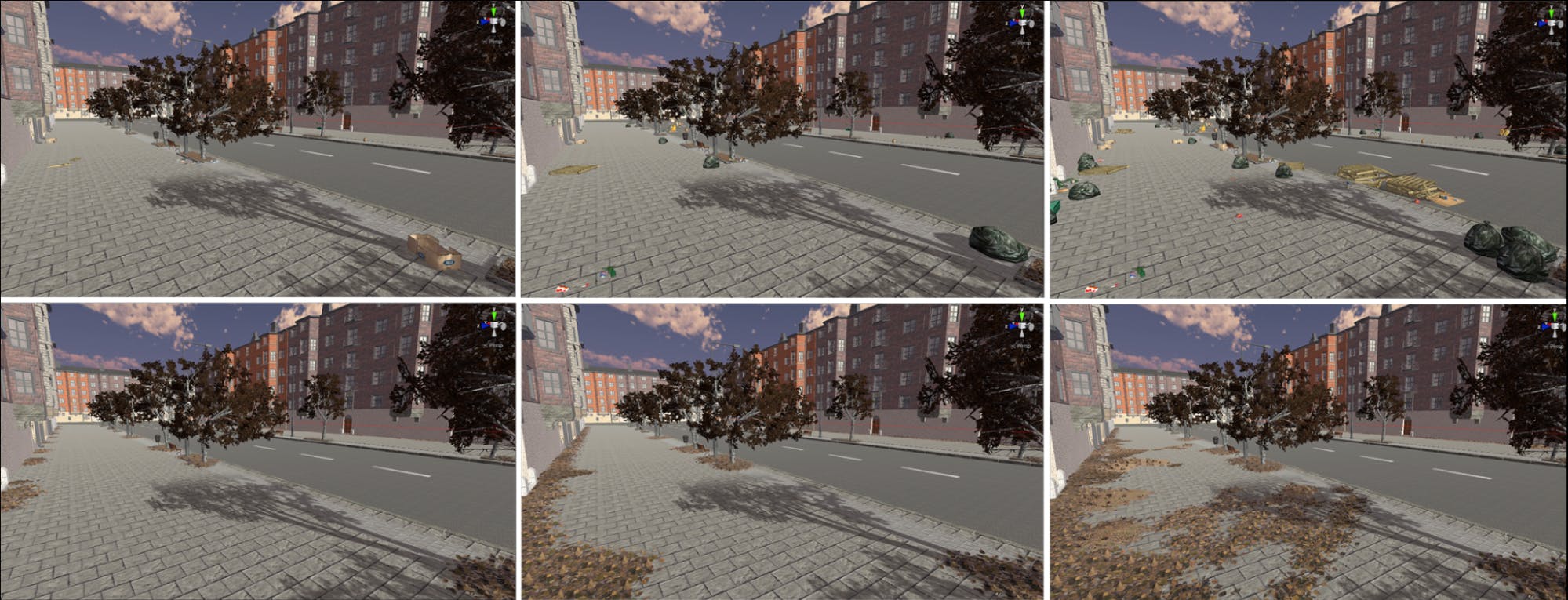VR Study On Human Perception Of Waste
2021UnityStudy

“Human Perception for Information Technology” at KTH
Understanding how different aspects of urban environments influence perception is crucial for creating realistic virtual cities. This project explores how the perception of dirtiness and realism in a virtual reality (VR) urban environment is influenced by different types of waste—specifically comparing man-made waste and natural waste.
Study Design
- Virtual Reality Setup – Participants experienced seven urban scenes in Unity 3D using an HTC Vive Pro VR headset.
- View-Only Interaction – Participants could look around but not move within the environment.
- Waste Conditions – Each scene contained varying types and amounts of either man-made waste (e.g., litter, plastic bags) or natural waste (e.g., fallen leaves, branches).
Key Findings
- Dirtiness Perception – Scenes with man-made waste were consistently rated as dirtier than those with natural waste.
- Realism – No significant difference in perceived realism between scenes with man-made vs. natural waste.
- Waste Quantity Perception – Participants overestimated the amount of waste in man-made waste scenes, compared to natural waste scenes with the same amount of debris.
This research highlights how different types of waste impact perceptions of cleanliness and urban realism in virtual environments, offering insights for VR simulations, urban design, and environmental psychology.
Other team members: Hallbjörg Embla Sigtryggsdóttir, Kári Steinn Aðalsteinsson and Yuanyang Ren.